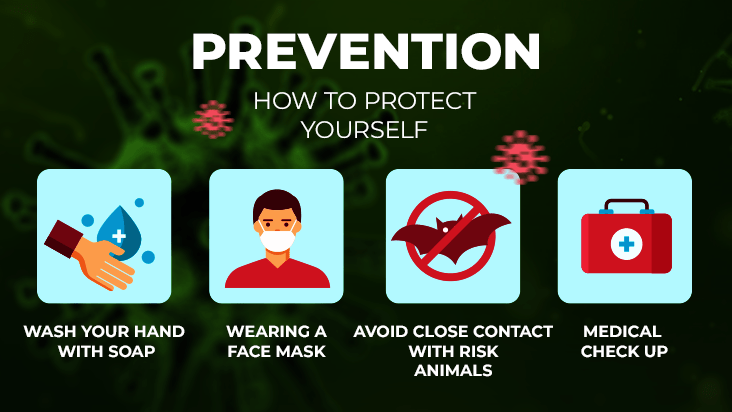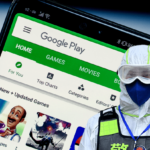The new coronavirus outbreak started in the city of Wuhan, China, in December 2019. The new virus has spread quickly. Currently, more than 100 countries and territories have laboratory-confirmed cases of coronavirus. As of Monday, 9, 2020, the new coronavirus has infected 110 110 people around the world. The majority of them (80, 738 people) are from China.
Out of all infected people, 62 393 has completely recovered. The new coronavirus has caused 3832 deaths. Meaning that out of closed cases 96% ended in recovery and the mortality rate is 6%. The new coronavirus conditions range from mild to serious or critical. Out of all active cases (43,886), 86% Is in mild condition, while 14 is serious.
At this point, the whole world is worried about the new coronavirus. Laboratories are confirming hundreds of new cases daily. At times like that, it is not surprising that all our attention is towards the coronavirus. This article provides a short overview of what is a coronavirus, who is under the risk and what are the basic protective measurements you can take against the new coronavirus.
What is Coronavirus
While most of us refer to the new virus as coronavirus it is not the official name of it. Coronaviruses are the large family of viruses that can cause illness in animals or humans. Coronaviruses can be found in various mammals, however, there have been only two cases when the virus transmitted from animals to humans. Coronaviruses family Is behind the SARS and MERS outbreaks, both in the last two decades.
Severe Acute Respiratory Syndrome (SARS-CoV) showed up in the early 2000s in China. It affected over 8000 people and caused the death of 800. The origin of SARS was traced to civet cats. Middle East Respiratory Syndrome (MERS-CoV) appeared in the early 2010s in Saudi Arabia. It infected more than 2500 people and caused over 850 deaths. The investigations found that MERS-CoV was transmitted from camels to humans.
Coronaviruses (CoV) are zoonotic, meaning that they can be transmitted between animals and humans. Apart from the coronaviruses that were behind SARS and MERS there are known several other coronaviruses that are circulating in animals; however, they have not infected humans yet. A novel coronavirus (nCoV) is a new virus that has not identified in humans until the latest outbreak.
The coronavirus study group formally recognized the new novel coronavirus as a sister to SARS-CoV and hence, named it SARS-CoV-2. The disease, that SARS-CoV-2 causes is formally named COVID-19.
Symptoms of COVID-19
All coronaviruses that have infected people cause respiratory infections that range from the common cold to more severe diseases, such as MERS and SARS. COVID-19 is no exception. The most common symptoms of it include tiredness, fever and dry cough. Some of the patients might experience other symptoms too, such as pains and aches, runny nose, nasal congestion, sore throat, or diarrhea. Usually, the symptoms of COVID-19 are mild and develop gradually. So much so, that approximately 80% of people recover from it without any special treatment. Some of them might not develop any symptoms at all. As the World Health Organization states, only one out of six infected people become seriously ill.
Should you be worried about the new coronavirus?
The new coronavirus spreads fast, from one city of China, it spread to more than 100 countries in three months period. The number of infected people is growing daily too. As the number of infected people grows and more countries confirm the coronavirus cases, the fear of it grows too. Many people are worried about themselves and their loved ones. Hence, naturally, people want to know how likely it is that they will get COVID-19 too.
According to the WHO, the likelihood of getting COVID-19 is quite high. However, it is not a reason to worry or panic. As mentioned above, the majority of the cases are mild and do not require any special treatment or hospital care.
However, there are risk groups that must be the most cautious. They are under the highest risk to develop severe illness. The risk group includes elderly people and the ones with the pre-existing medical condition. The conditions include high blood pressure, lung disease, heart disease, diabetes or cancer. People with these pre-existing conditions appear to develop more serious illness.
If you are going to get COVID-19 or not, highly depends on your location too. In some countries, like China, South Korea, Iran, or Italy, the new coronavirus is spread more widely. While in some countries there are very few confirmed cases.
Measurements you can take against Covid-19
Does not matter where you live, or if you belong to the certain risk group, you can always take precautions. Following the advice of health organizations and taking measurements against COVID-19 will reduce the risk of getting it.
Get verified information about the new coronavirus
The best thing to do against the COVID-19 is to get the news, safety tips and information from the trusted resources and stay up to date. You can download coronavirus trackers and maps to know where it is spreading and how. Knowing it will help you know which places to avoid if you are travelling and get information if there are any cases in your country. You can check the live statistics to observe the new cases, recoveries and other useful information about COVID-19.
Wash your hands
COVID-19 can spread through small droplets from the mouth or nose which are spread when the infected person exhales or coughs. The droplets fall on the objects around the infected person. After you touch them, there is a high chance to get infected too. Therefore, it is very important to keep your hands clean regularly and thoroughly. Wash your hands frequently with soap and water. If you do not have access to the water and soap at the moment, use the alcohol-based hand rub instead. It will kill viruses that might be on your hands.
Avoid touching mouth, eyes, and nose
As discussed above, your hands can pick up viruses. We touch a lot of things in or out of our houses or office. It would be difficult to wash your hands every time you touch an object. Hence, avoid touching your nose, eyes, and mouth. If you touch them by your hand that touched the surface with droplets, you might get infected.
Maintain 1-meter distance with others
We do not know an exact incubation period of COVID-19. If it is spread in your city or country, you might be meeting people who have COVID-19 but do not know it yet. Hence, it is important to keep the social distance between you and others. Keep one-meter distance, especially with people who are sneezing or coughing. When people cough or sneeze, they spread little droplets around them. They might contain viruses, including COVID-19 virus.
Have a good respiratory hygiene
You and the people around you need to follow good respiratory hygiene. Even when you do not have COVID-19, or are not under the risk of getting it at the moment. When coughing or sneezing, cover your nose and mouth with your elbow or a tissue. If you use a tissue, immediately dispose of it. Otherwise, you or people around you might spread the virus.
Stay at home if you feel unwell
If you feel unwell, stay at home. While we do not know the incubation period of COVID-19 health officials suggests to stay at home for 2 weeks. If you develop COVID-19 symptoms such as fever, dry cough, or difficulty breathing make sure to seek medical care.
What about wearing masks?
Since the start of the coronavirus outbreak, most probably you would see a lot of people wearing masks. Many people think that this is the most effective and important measurement one can take to protect themselves from COVID-19. However, health officials do not advice people to wear masks for two reasons. It is not necessary to wear them to prevent getting COVID-19. The most important measurements you can take is mentioned above. Also, it creates a massive shortage of mask supplies, which are necessary for doctors and people working with infected people. Hence, the WHO encourages a wise usage of disposable masks.
You should only use it if you already have COVID-19 symptoms, or if you are taking care of a person with suspected COVID-19 infection.
Even when you are using disposable masks for a valid reason, you should know how to use them properly. Before you put it on, wash hands with soap and water, or clean them with the alcohol-based rub. When you are using it, do not touch it. Replace the mask once it gets damp and do not re-use it. When you want to remove it, do not touch the front of it, but remove from behind. After, put it in the closed bin and wash your hands with soap and water.
Also, remember, that mask is only effective if you follow other recommendations too.
Do not panic
It is hard to keep calm during the outbreak of the new coronavirus that Is affecting the whole world. However, you should remind yourself to keep calm and do not panic. As mentioned, most people infected with COVID-19 experience mild symptoms and do not require any special treatment. Keep yourself updated from the verified sources and follow the recommendations of health officials. If you belong to the risk group, be more careful and avoid crowded places. If you get COVID-19 seek immediate help and follow the recommendations.



